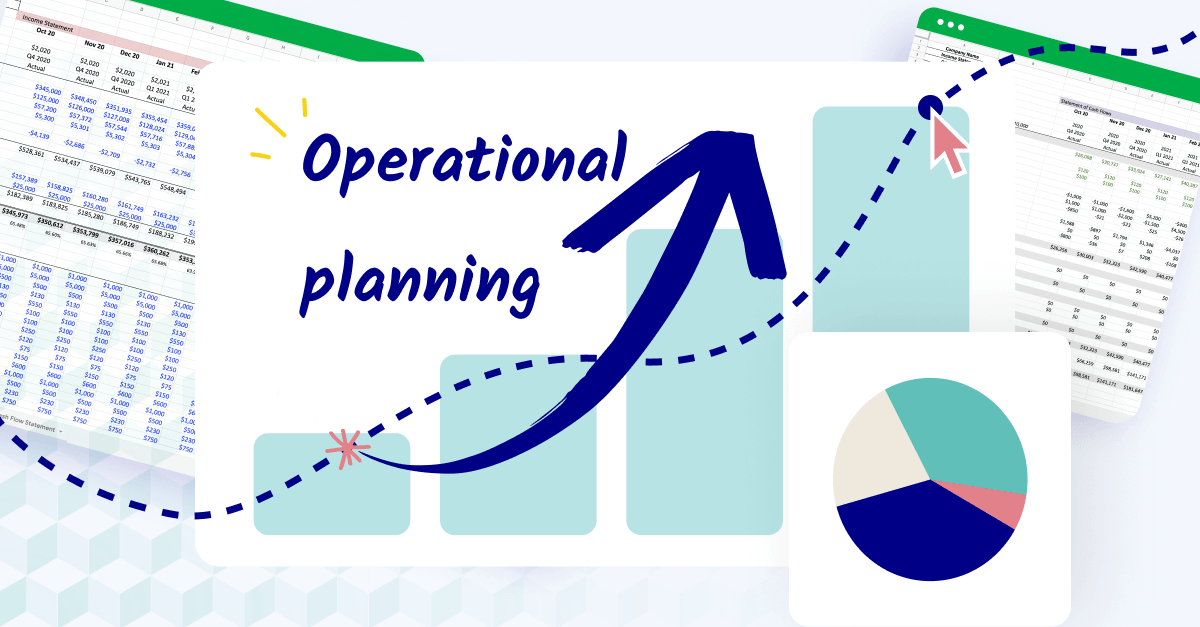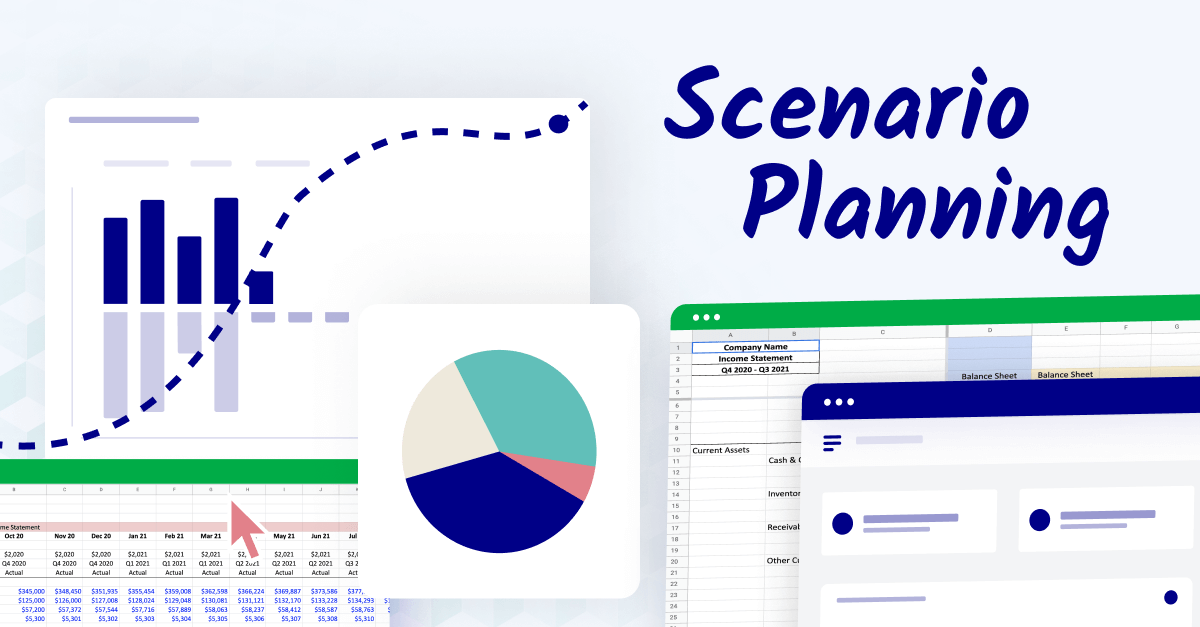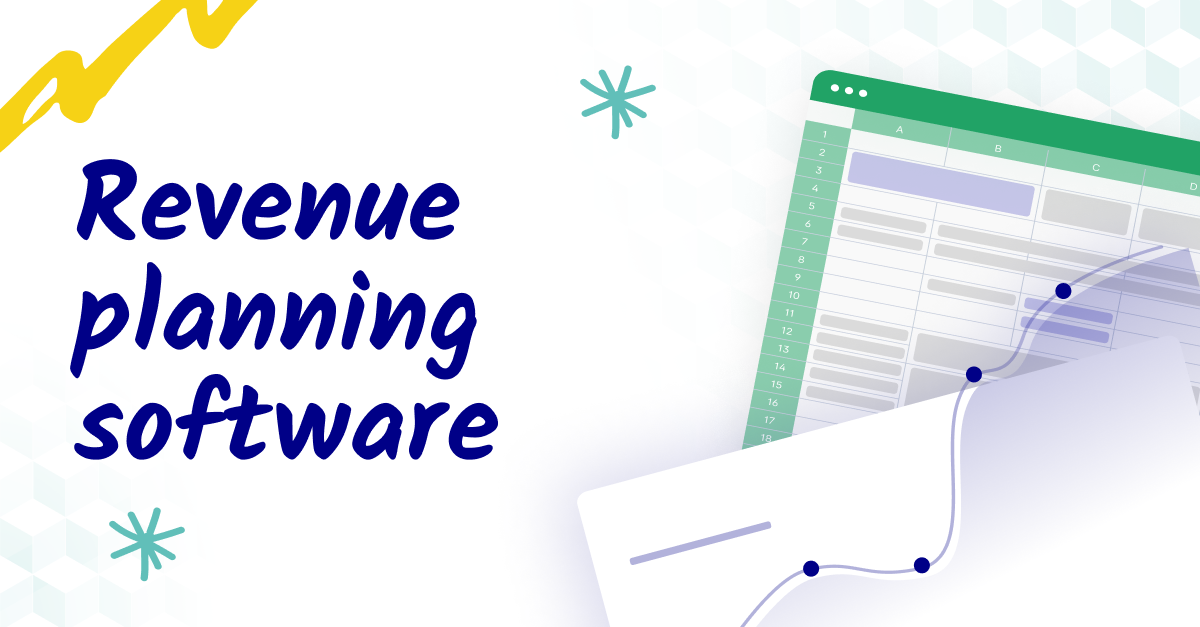What is strategic planning?
Strategic planning is a long-term plan for success, focusing on specific goals that grow the business over several years.
Ever had a dream for your company? Of course you have. So you know you hit that target with a strategic planning process.
It’s like any personal goal. If you want to change from a couch potato to a marathon runner, you need a roadmap for the long journey ahead. It’s the same in business. A company lays out a multi-year plan to increase revenue and grow headcount.
It also takes an external-focused approach like looking at competitors, the economy, and customer feedback.
This type of big-picture thinking usually sits with the CEO and board members. So, strategic plans are the vision that keeps everyone in the organization’s eyes on the prize.
How does FP&A fit into this?
Financial data is the bedrock that determines how realistic a goal in strategic planning is. As a result, the finance team is critical to strategic planning.
Many strategic goals concern revenue. The headline aims may be increasing cash flow or hitting a certain amount of sales.
You’ll need to supply financial analyses and point out any storms on the horizon. Financial data can also help with any investor buy-in required to achieve those audacious goals.
What is operational planning?
If strategic planning is like setting the goal of running a marathon, then operational planning is the training plan.
You can’t just rock up to a marathon without training and expect to win. You need to prepare your body and your mind with training and nutrition.
Operational planning is the same. The nuts and bolts get you to the vision you’re cooking up. Day-to-day operations to achieve the strategic concepts are decided at this level.
This level of planning is usually handled by middle management once the board has decided on the strategic plan. Operational plans focus on the internal workings of a company, like budgets, departmental responsibilities, and products.
The strategic plan is the North Star the operational plan looks to. If a strategic plan is five years long, you could break up the operational plan into year-long roadmaps. Sometimes it’s on a shorter scale. Bigger companies might have multiple strategic and operational plans.
Here's a working operational planning definition:
Operational planning (OP) is the implementation of strategic plans and objectives to reach specific business objectives.
How does FP&A fit into it?
Financial management roles focusing on operations will have a holistic view of the business integral to planning.
The finance team can contribute to operational planning by developing risk strategies, helping set an operating budget for departments, and eliminating unnecessary spending.
So FP&A needs a seat at the table of the operations planning process.

A word on tactical planning
So if there’s the big-picture thinking of strategic planning and the day-to-day thinking of operational planning, can you take it further?
Sure thing: tactical planning. It’s time to get down to business.
Tactical planning is usually short-term and addresses a specific business difficulty or need. While the strategy has clear goals, the tactical plan has clear deliverables.
When running that marathon and the training plan is in place, tactical planning is like the personal trainer. They help define and constantly adjust the plan's details so you can hit those milestones.
Say the strategic plan has a goal to increase headcount by 50%. The tactical plan details the method for defining the interview questions, hiring the recruiters, finding the candidates, and conducting the interviews.
What’s in a strategic plan?
Every company has a different approach to strategic planning. Some popular models, like OKRs and balanced scorecards, are often used.
However you approach it, here are some central parts of a strategic plan.
Vision and values
Your mission statement is a collaborative document that defines what the company is about and what’s most important to making it successful. It’s meant to be aspirational and create buy-in for the employees to work towards.
One person can’t just define visions and values. They need to be weighed up by several company stakeholders to make an impact—and not miss the mark.
Key goals
Once the company vision is in place, the next step is laying out some achievements to aim for. These goals look like FAST goals, like meeting a specific number in revenue or increasing a certain percentage in turnover.
The goals must be audacious but grounded in reality, linked to those visions and values you’ve already set out, and objectively measurable.
Need help with what to include? As a financial expert, you should define financial security for the business and work out the goals from there.
Action plan
How exactly are you looking to achieve those goals? The business needs a plan of action to see these long-term achievements come to fruition.
Some high-level strategies to go about reaching any milestones are often included in the strategic planning document. This doesn’t need to go into too much detail—that’s what the operational and tactical plans are for—but they must show a clear roadmap ahead.
What’s in an operational plan?
Once the strategic plan is set, the operational plan should fall into place.
But here are some core aspects of every operational planning process.
Objectives
The company’s strategic plan will help inform the objectives here, as will the operational budget, departmental resources, and the relevant stakeholders for each goal.
Details
This is the plan that gets into the weeds.
A detail-oriented operational plan is critical for a few reasons: clear and actionable steps are needed, timescales are established, and resource allocation is required.
Stakeholder responsibility
The last thing anyone needs is confusion over who’s doing what in the business operational plan.
This gives a sense of ownership and accountability for executing the plan.

Strategic and operational planning example
Sometimes it can be hard to differentiate between all these business plans.
Let’s cover some operational planning examples of these two types in practice.
Strategic plan
A tech scale-up company, JustTech Inc, has hit the 100-employee mark and has over $5m in revenue. It’s at the point of its lifecycle where a three-year strategic plan is needed.
After consulting key stakeholders in finance, HR, and operations, it decides on the company goals:
- Achieve $20m in revenue
- Expand to 250 employees
- Launch two new product lines
From a financial perspective, the key strategies and initiatives for those three goals could look like this:
Some key performance indicators could be revenue growth, employee headcount, and the return on investment from any new product lines introduced.
Operational plan
Those three strategic goals must be broken down into actionable objectives and strategies regarding the operation plan.
So let’s do that here.
To achieve $20m revenue, the objectives could look like this:
As for growing the headcount to 250 employees:
- Develop a hiring plan with a priority list for the most urgent roles
- Create a robust and effective onboarding program for remote employees to widen the candidate pool
- Create an employee incentives scheme
And finally, for the two new product lines:
- Conduct market research to spot product opportunities
- Put together a cross-departmental product development team
- Develop a roadmap for each product line concept
Each objective is assigned budgets, timescales, and the relevant stakeholder to ensure success.
Note that these different parts of the operational plan can inform each other: to meet revenue goals, you might need to allot more headcount to the sales and marketing team than your initial analysis suggested.
JustTech Inc now has everything it needs for the roadmap to success.
The ultimate process for a strategic plan
There’s no one-size-fits-all approach for a strategic plan—every company and its goals are different.
But you can follow some key steps to get the core plan together.
Let’s get into them.
1. Gather the key stakeholders
The company's varied voices are needed for a successful strategic plan.
These individuals will almost always include the executive board. Executives, managers, and even external advisors may also be relevant.
2. Do your research
For the strategy to work, you need to know where the company is internally and externally in the market.
A SWOT analysis for internal assessment is always an excellent place to start. For insights, you can also use gap analysis, competitor research, and customer feedback.
The more data points gathered, the better informed you’ll be.
3. Work out the goals
The goals can now be created based on the research, mission statement, visions, and values.
Prioritize goals that will have the most impact, are feasible in the long term, and are the most aligned with the values. Leave everything else.
4. Plan of attack
An action plan outlining each goal's strategies, initiatives, and tactics should be developed. Consider a variety of tactics like marketing campaigns, IT upgrades, and strategic partnerships depending on the plans.
You don’t need reams of detail: that’s what the operational plan is for.
You can also define the key performance metrics for the review process at this stage.
5. Monitor and adjust
Semi-regular reviews are a good idea. It’s an opportunity to reflect on the plan and whether anything needs to change. Good financial data can help with that.
How often you need to review depends on the business. Maybe every month would be appropriate if you’re in a start-up environment. Yearly is feasible if you’re in a more established company.
How to create an operational plan
Got your strategic plan sorted? Good. Let’s move on to how you'll move the needle with operational planning.
Break down the strategic vision and goals
It’s time to take that strategic plan and break it down into actionable steps. Start by reviewing the long-term strategic objectives and looking at which departments need to be involved in achieving which goal.
You might want to ask: What tangible assets does the business have? What resources does it currently lack? Are there any financial risks the company is exposed to?
From there, you can also consider which operational areas need improvement to achieve the objective.
Boom—your operational objectives are now in place.
Get a budget in place
Developing a detailed budget based on the needs of each department and the resources needed to meet the strategic objectives is the key to success.
As you’ve already identified which operational areas are aligned with which objectives, you can allocate the budget based on this and the expected ROI.
Be sure to plan for any unexpected expenses and changes in priorities to make your budget weatherproof.
Set targets
Each operational objective now needs a target to keep everyone on track and as a benchmark for measuring progress.
Setting targets needs to be an exercise in restraint. Too audacious and employees will lose heart, but too small and the strategic plan is harder to achieve. Realistic targets are a vital part of making the operational plan work.
Assigning responsibility to specific teams and leaders will keep the operational plan on track and demonstrate a clear workflow for when it’s time to review progress.
Review regularly
On that note, schedule regular reviews to ensure the operational plan is functioning as it should be.
These review sessions should determine whether the objectives are being met and if anything needs to be tweaked to meet the overarching strategic goals.
Open communication is key during these review sessions, as are data-driven insights that can help quickly identify strengths and weaknesses in the plan that need adapting.
Best practices for integrating operational and strategic planning
Integrating operational and strategic planning requires a concerted effort to align goals, foster collaboration, and facilitate communication across the organization.
By implementing best practices and leveraging technology and teamwork, organizations can achieve greater agility, efficiency, and success in achieving their business objectives.
Establish Clear Objectives: Ensure that both operational and strategic planning efforts are aligned with the overarching goals and objectives of the organization. Clearly define the desired outcomes for each planning process to maintain focus and direction.
Foster Cross-Functional Collaboration: Encourage collaboration between departments involved in operational and strategic planning, such as finance, operations, marketing, and sales. By fostering an environment of teamwork and cooperation, you can leverage diverse perspectives and expertise to develop comprehensive plans.
Implement Integrated Planning Tools: Invest in integrated planning tools that facilitate seamless collaboration and data sharing across different departments and planning processes. These tools streamline communication, centralize data management, and provide real-time visibility into planning activities.
Develop Key Performance Indicators (KPIs): Define measurable KPIs that align with both operational and strategic objectives. Regularly monitor and evaluate performance against these KPIs to track progress and identify areas for improvement.
Establish Feedback Loops: Implement feedback mechanisms to gather input from stakeholders at various levels of the organization. Solicit feedback on proposed plans, initiatives, and performance metrics to ensure alignment with strategic goals and address any concerns or issues proactively.
Future trends for operational and strategic planning
New developments in predictive analytics are crucial to the constantly changing field of operational and strategic planning.
Technological innovations like artificial intelligence, machine learning, and prescriptive analytics are changing how businesses predict, evaluate, and make decisions. Algorithms for machine learning enable computers to sort through large, complicated data sets, increasing the precision of forecasts and promoting data-driven decision-making.
Analogously, artificial intelligence improves operational efficiency and strategic foresight by facilitating autonomous decision-making and real-time data processing.
Prescriptive analytics goes one step further by offering suggestions and insights that may be put into practice to maximize results. Organizations need to emphasize data governance and ethics, embrace change, and invest in advanced analytics tools in order to effectively capitalize on these developments.
Organizations can position themselves for success by remaining proactive and adjusting to these new trends.
Conclusion
Now you know all about operational planning.
You know how both a strategic plan and operations plan work together to help guide the business.
If you want to know the best way to begin operational planning, you might want to consider Cube.
Cube helps you pull your source system data into Excel so that you can quickly and easily analyze it without doubting its integrity or accuracy.
Cube also interfaces with Google Sheets, so cross-departmental planning (the kind that operational planning requires) becomes much easier because budget owners will have vendor-level access to their financials.
Click the button below and request a free demo:



.png)













